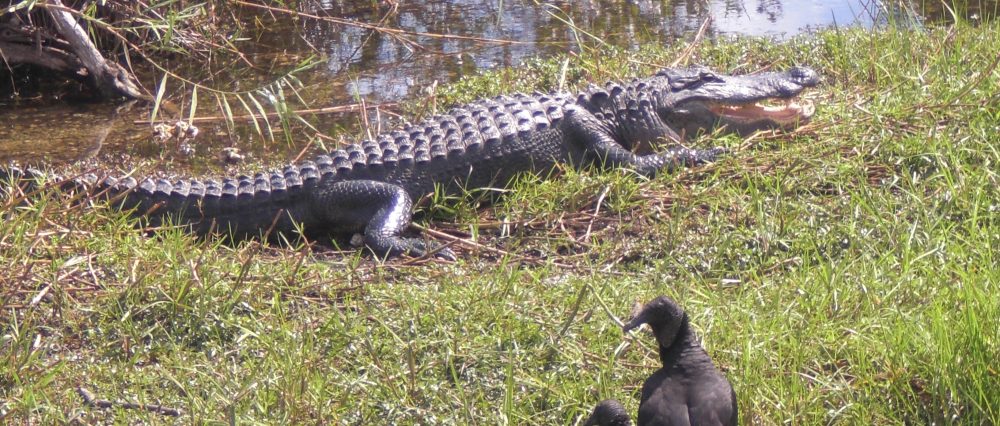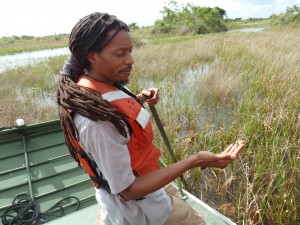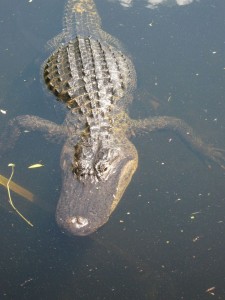A wildlife refuge of vast wildnerness borders urban Florida
By Quenton Narcisse
Before he revved the motor of his airboat Donatto Surratt said he wanted to take his visitors to the Arthur R. Marshall Loxahatchee National Wildlife Refuge to what had been a massive rookery, where native birds would cover the entire sky.
But Surratt, a biologist at the refuge, demonstrated when he reached the spot, that the situation is now quite different.
Established in 1951, the Loxahatchee refuge covers over 145,000 acres of Everglades habitat, providing flood control as well as provide habitat for fish and wildlife population. Stretching across the western side of Palm Beach County, it is one of the few remnants left from the original Everglades.
It is also far from pristine. Canals have disrupted water flow, pollutants have seeped into the system and invasive plants have tried to spread.
“It’s gonna be hard to see a Loxahatchee similar to the one we’ve seen in the past,” said Melissa Martin a senior ecologist at the Wildlife Refuge, after the tour. “So much of the system has been altered; some parts us, and other parts the system. But there have been some real successes here, so I think overall we would say that it’s a management work in progress.”
Many are convinced that man-made projects have played a negative role in the Everglades, as billions of gallons of water had been drained from Lake Okeechobee and the Everglades wetlands. Martin, said that past construction of canals have taken a toll on the fluidity of the Everglades.
“Over the past 100 years, four major canals that actually take water from Lake Okeechobee were all constructed,” Martin says. “We now have a water regulation schedule, which is how we determine and manage water within the refuge.”
As a wetland ecosystem, Loxahatchee provides habitat for over 250 species of birds, and is home to the American alligator as well as the endangered Everglades snail kite.
Officials at the refuge noted that a recent drought has played a critical role in the near-extinction of some refuge plants, and reduced the number of birds present. Many offspring died because smaller pools of water dried out before the young were old enough to leave the nest.
Despite’s Loxahatchee’s problems, it still draws 280,000 visitors annually, including numerous school tours led by the refuge’s staff. Activities such as boating, canoeing and kayaking are other alternatives offered by the refuge.
The refuge doesn’t offer airboat rides as they were deemed to be an “incompatible” use of the refuge.
They are offered nearby at Water Conservation Area 2. For a fee of about $25 passengers can experience a two-hour ride across a portion of the Everglades while enjoying the exotic scenery, including alligators, and up to 350 native and migratory bird species .
The Loxahatchee refuge has days dedicated to community involvement, such as Everglades Day on the second Saturday of February, and International Migratory Bird Day in May.
Whether one hikes a portion of the refuge or views it by boat, it would literally takes days to see everything that Loxahatchee has to offer.


